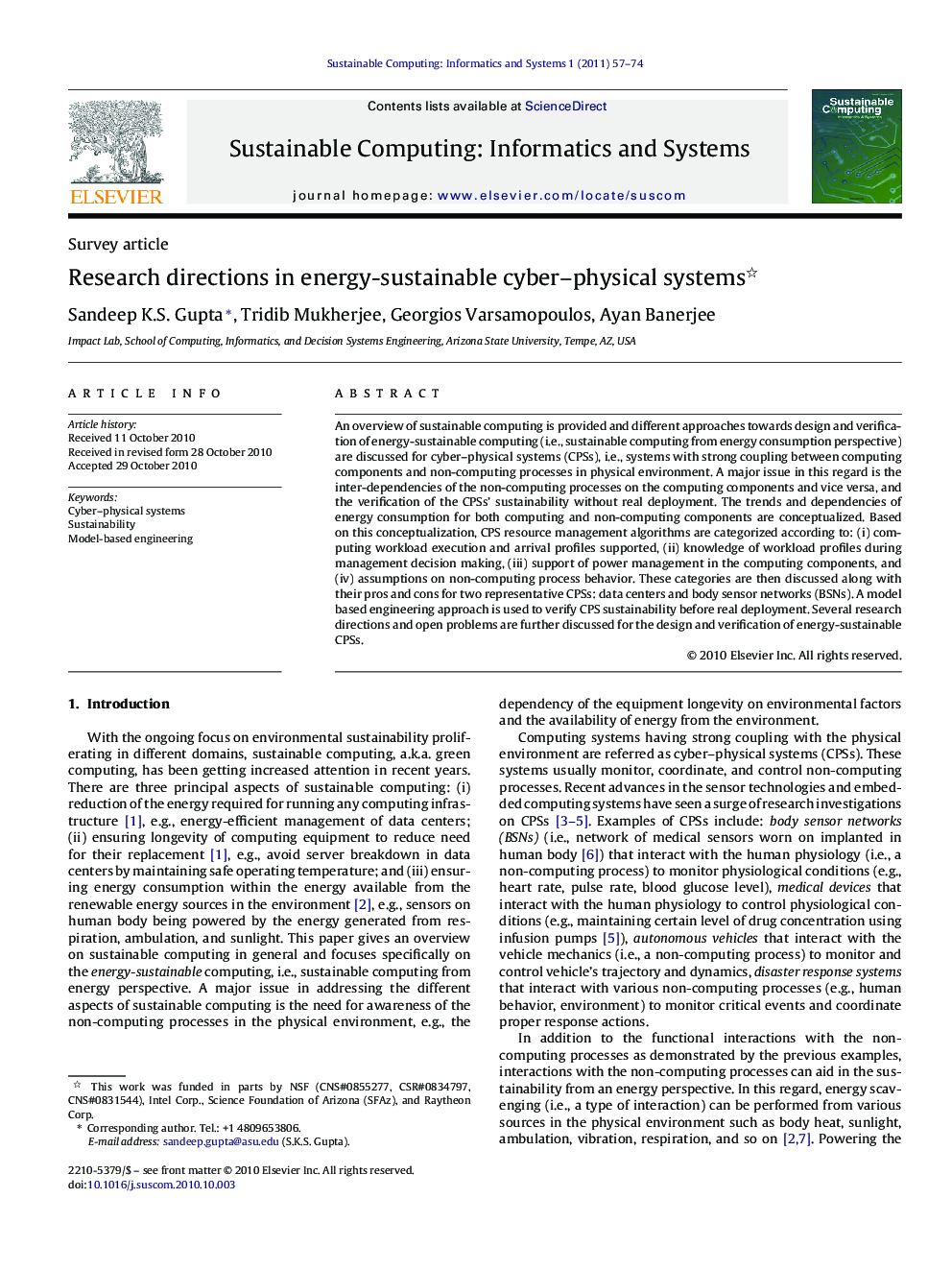| کد مقاله | کد نشریه | سال انتشار | مقاله انگلیسی | نسخه تمام متن |
|---|---|---|---|---|
| 494097 | 723945 | 2011 | 18 صفحه PDF | دانلود رایگان |

An overview of sustainable computing is provided and different approaches towards design and verification of energy-sustainable computing (i.e., sustainable computing from energy consumption perspective) are discussed for cyber–physical systems (CPSs), i.e., systems with strong coupling between computing components and non-computing processes in physical environment. A major issue in this regard is the inter-dependencies of the non-computing processes on the computing components and vice versa, and the verification of the CPSs’ sustainability without real deployment. The trends and dependencies of energy consumption for both computing and non-computing components are conceptualized. Based on this conceptualization, CPS resource management algorithms are categorized according to: (i) computing workload execution and arrival profiles supported, (ii) knowledge of workload profiles during management decision making, (iii) support of power management in the computing components, and (iv) assumptions on non-computing process behavior. These categories are then discussed along with their pros and cons for two representative CPSs: data centers and body sensor networks (BSNs). A model based engineering approach is used to verify CPS sustainability before real deployment. Several research directions and open problems are further discussed for the design and verification of energy-sustainable CPSs.
Journal: Sustainable Computing: Informatics and Systems - Volume 1, Issue 1, March 2011, Pages 57–74